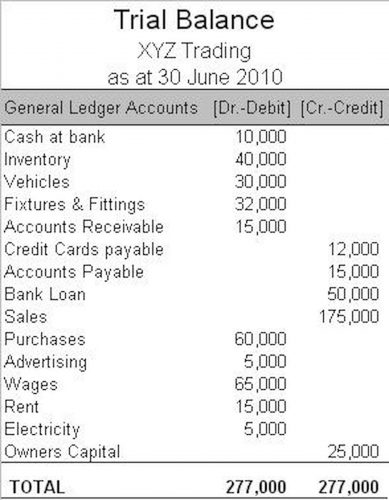
Accrued expenses use the accrual method of accounting, meaning expenses are recognized when they’re incurred, not when they’re paid. Below is a current liabilities example using the consolidated balance sheet of Macy’s Inc. (M) from the company’s 10-Q report reported on Aug. 3, 2019. Current liabilities are obligations that must be paid within one year is unearned revenue a current liability or the normal operating cycle, whichever is longer, while non-current liabilities are those obligations due in more than one year. The current liability section of Safeway Stores Inc. shown below is typical of those found in the balance sheets of many US companies. A firm may receive cash in advance of performing some service or providing some goods.

Unearned Revenue Reporting Requirements
Since the firm is obligated to perform the service or provide the goods, this advance payment is a liability. In connection with current liabilities, the difference between the value today and future cash outlay is not material due to the short time span between the time the liability is incurred and when it is paid. Like assets, liabilities are originally measured and recorded according to the cost principle.
How to record unearned revenue
An example of a current liability is money owed to suppliers in the form of accounts payable. Once deferred revenue recognition takes place, it comes off the balance sheet. In accrual accounting, assets need equal liabilities, in the same period.
Revenue Recognition Principle
By keeping these industry-specific considerations in mind, businesses can better understand the dynamics of unearned revenue and its impact on financial reporting. In this section, we will explore certain industry-specific considerations for unearned revenue, diving deeper into service and subscription models as well as publishing and prepaid services. As the services are provided over time, accountants perform adjusting entries to recognize the earned revenue. Accrued revenue is income earned by a company that the company has not yet been paid for. Therefore, the company opens a receivable balance as it expects to get paid in the future. While the company got cash upfront for a job not yet done when considering deferred revenue, the company is still waiting for cash for a job it has done.
Income Statement Correlations
- Therefore, we cannot assure you that actual results will not differ materially from those expressed or implied by our forward-looking statements.
- First, forthe prepayment of future services and for the revenue earned in2019, the journal entries are shown.
- If you are unfamiliar with ASC 606, I strongly recommend you read the related article for now and take the time to go over the entire document with your accountant at some point.
- This journal entry illustrates that your business has received cash for its service that is earned on credit and considered a prepayment for future goods or services rendered.
- When the customer pays the money beforehand, it would be seen as unearned as it was received but not earned due to the service or good not being provided.
- Unearned revenue plays a pivotal role in cash management since it provides the organization with an inflow of cash that can be used for many activities.
Accrual accounting and GAAP rules state that a business must record a revenue transaction as and when it occurs rather than when it is completed or cash is received. Suppose Blue IT company is a SAAS provider and it offers many of its software products through annual/monthly subscription plans. The revenue generated in advance can be useful for the cash flow requirements of the seller. However, it creates an obligation to deliver timely services or goods to the buyer. Unearned revenue is common for sellers with services and subscription models. It comes with the added advantage of receiving cash before delivering goods or services.
Measurement and Valuation of Current Liabilities
- This can give a picture of a company’s financial solvency and management of its current liabilities.
- The principal on a noterefers to the initial borrowed amount, not including interest.
- Therefore, Beeker’s Mystery Boxes would record $240 as unearned revenue in their records.
- However, during thecompany’s current operating period, any portion of the long-termnote due that will be paid in the current period is considered acurrent portion of a note payable.
- This decreases the number of bad debts as the customer has already paid the money.
- This shows that you’ve received cash but still owe the customer goods or services in return.
It can be thought of as a “prepayment” for goods or services that a person or company is expected to supply to the purchaser at a later date. Represents the impact of fair value adjustments to acquired unearned revenue relating to services billed by an acquired company, prior to our acquisition of that company. Unlevered Free Cash Flow does not represent residual cash flow available for discretionary expenditures since, among other things, we have mandatory debt service requirements. In certain instances, entities such as law firms may receive payments for a legal retainer in advance. In this case, the retainer would also be recorded as unearned revenue until the legal services are provided. A company’s financial statements might appear different using one accounting method versus another.
How does unearned revenue reflect in a company’s balance sheet?
Funds in an unearned revenue account are classified as a current liability – in other words, a debt owed by a business to a customer. Once a delivery has been completed and your business has finally provided prepaid goods or services to your customer, unearned revenue can be converted into revenue on your balance sheet. You also need to enter a credit of $4800 to the deferred revenue account. The subscription for monthly accounting service is considered a short-term liability on the balance sheet. Unearned revenue, also known as deferred revenue, is a crucial element in a company’s financial statements. It represents the money received by a company for goods or services that have not yet been delivered.
What Is Unearned Revenue? A Definition and Examples for Small Businesses

The journal entry needs to be separated from the actual revenue because one has a tax obligation, and the other is considered a liability to the organization and is not used to determine the tax obligation. There is also another entry for the inventory taken out of the organization or the inventory used to perform the service for the customer. These amounts need to be updated on the statement of financial position and the income statement.
Is there any other context you can provide?
Unearned revenue, also called deferred revenue or advanced payment, is money that has been paid to your business for goods or services that you have not yet delivered. Essentially, it’s a cash prepayment in exchange for the promise of goods or services. Banks, for example, want to know before extending credit whether a company is collecting—or getting paid—for its accounts receivables in a timely manner.
- In cash accounting, the seller will only record an advance payment for an order rather than recording two entries in the journal.
- We expect the variability of these excluded items may have a significant, and potentially unpredictable, impact on our future GAAP financial results.
- So it stays on your balance sheet until services or products are delivered.
- Some states do not have sales tax becausethey want to encourage consumer spending.
- When a customer prepays for a service, your business will need to adjust its unearned revenue balance sheet and journal entries.
- The scheduled payment is $400;therefore, $25 is applied to interest, and the remaining $375 ($400– $25) is applied to the outstanding principal balance.
When a company uses the accrual accounting method, revenue is only recognized as earned when money is received from a buyer and the goods or services are delivered to the buyer. When a company accrues deferred revenue, it is because a buyer or customer paid in advance for a good or service that is to be delivered at some future date. Noncurrent liabilities are long-term obligations with paymenttypically due in a subsequent operating period. Current liabilitiesare reported on the classified balance sheet, listed beforenoncurrent liabilities. Changes in current liabilities from thebeginning of an accounting period to the end are reported on thestatement of cash flows as part of the cash flows from operationssection. An increase in current liabilities over a period increasescash flow, while a decrease in current liabilities decreases cashflow.
